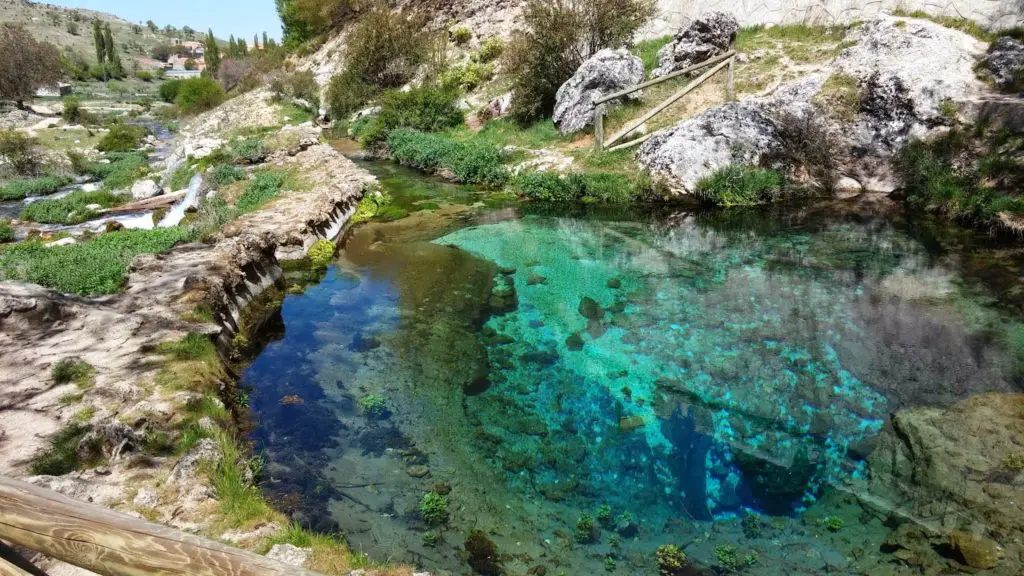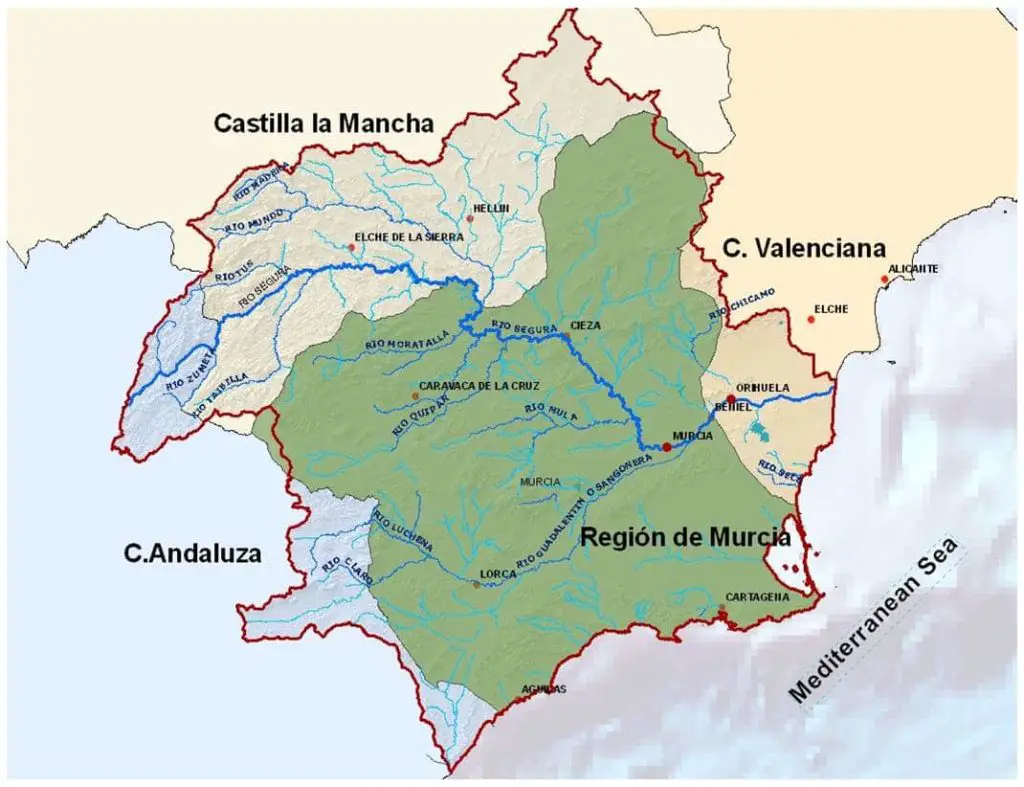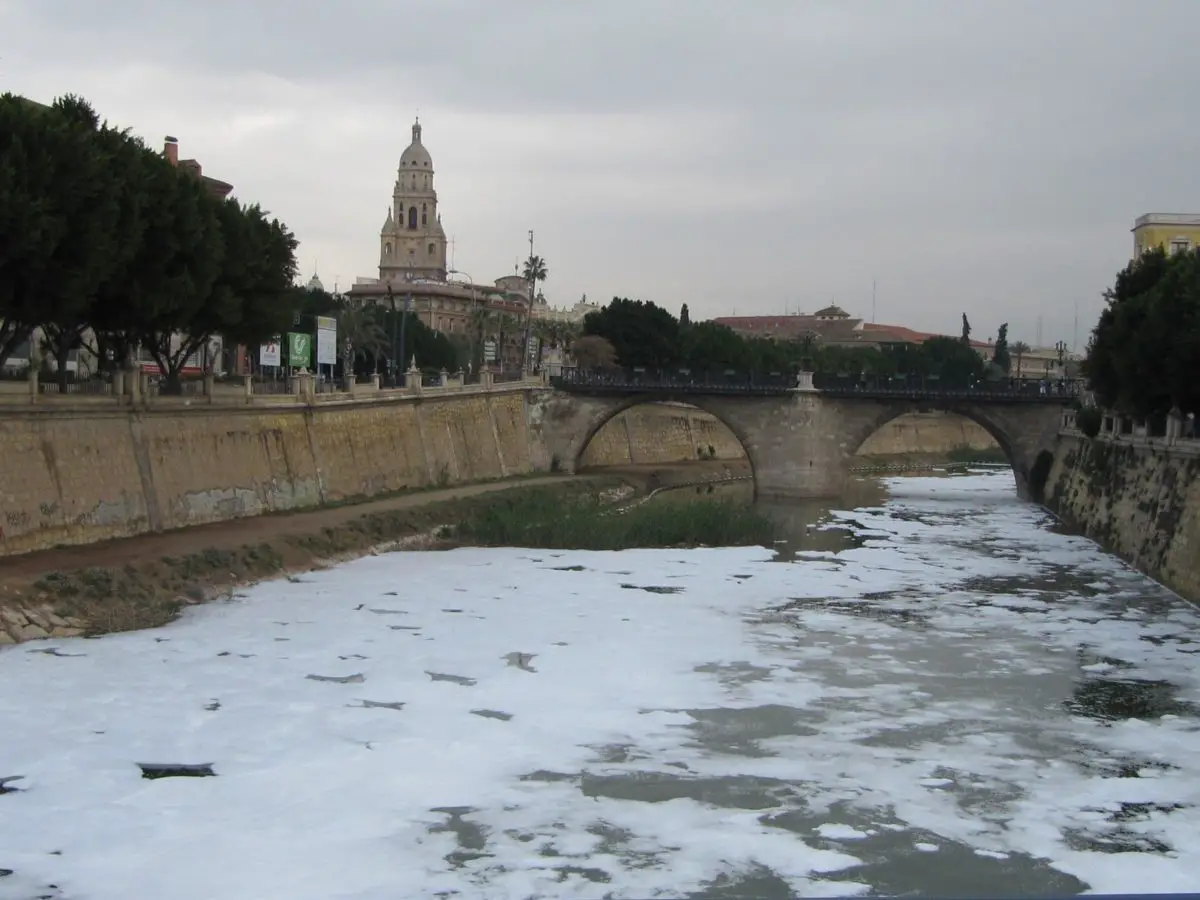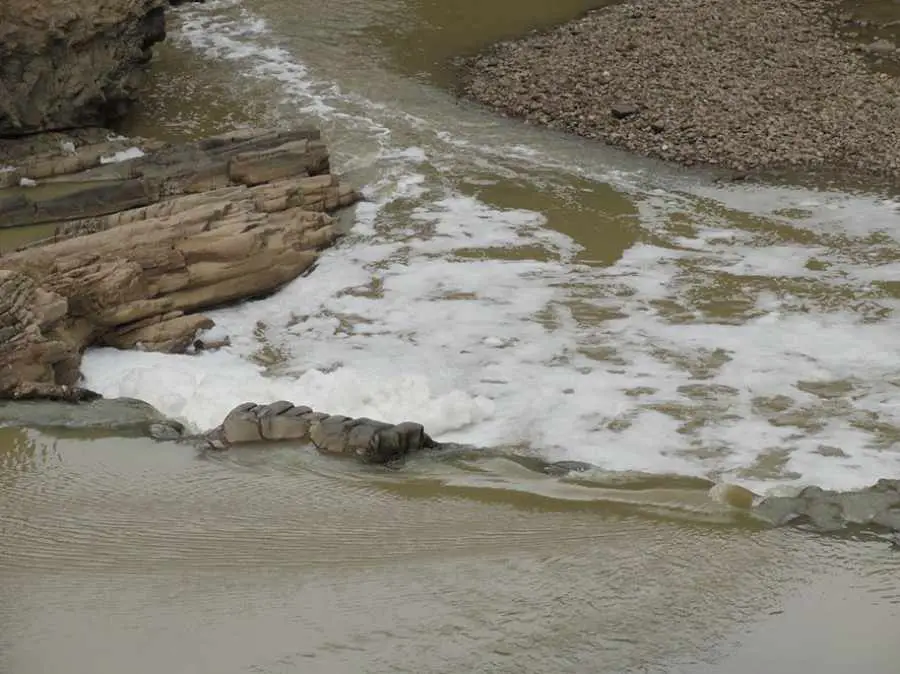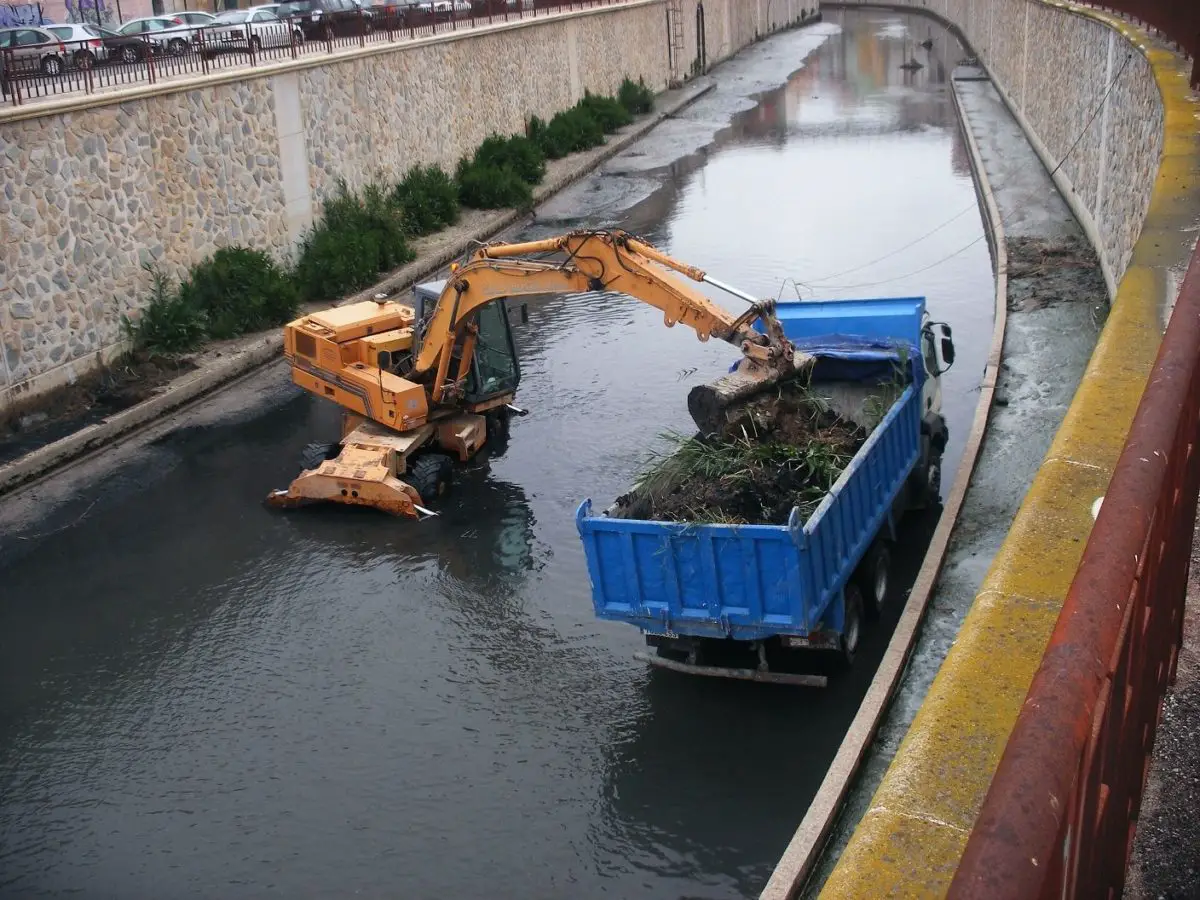The River Segura is one of the largest and most important rivers in Spain, located in the southeast of the country, like the Nile in Egypt.
The origin of its name comes from the word “Thader”, which means palm tree in Latin, then the Arabs called it “Wadi al-Abyad”, meaning white river, due to the crystalline nature of its waters. Today it is called the River Segura, because its waters originate in the Sierra Segura.
Indice De Contenido
The source of the River Segura
This important Spanish river has its source in the Sierra Segura, about 5 kilometres from the village of Pontón Bajo, where there is a hamlet called Fuente Segura. The source of the River Segura is in the province of Jaén, in the municipality of Santiago Pontones.
Map and location of the River Segura
Below we show the exact location of the Segura River on the map, as well as its course, source and mouth.
Route of the river Segura
The aforementioned River Segura has its source in the Sierra Segura, in the municipality of Santiago Potones. Its crystalline waters start in the province of Jaén and continue through Albacete, Murcia and Alicante. It ends its course in the Mediterranean at Guardamar de Segura, in the province of Alicante.
The River Segura flows through the provinces of Albacete, Murcia and Alicante, and its total length is 325 kilometres, with a catchment area of 14,936 square kilometres. To appreciate this beautiful route, you can visit the Sierra de Cazorla, Segura y Las Villas Nature Reserve. There are several reservoirs, tributaries and wadis.
The basins of the river Segura are divided into three courses:
- Upper course.
- Middle course.
- Lower course.
High Course
The high route begins in the municipality of Santiago Potones, in a cave flooded with crystalline water at 1,413 metres above sea level. According to the legend, two oxen were thirsty and, looking for water, they came across the cave and, because the water was transparent, they could see the bottom and continued until they drowned.
The cave from which the water emerges is of karst type, where the water flows in two directions, calm or violent, depending on the season, creating waterfalls that are ideal for the practice of rafting.
The waters of the river Segura flow through a deep and narrow valley, with very fast flowing tributaries such as the Tus, Madera and Zumeta. There are two reservoirs, Cenajo and Fuensanta, which are used as a source of hydroelectric energy and regulate the high and medium flows.
Middle Course
The middle course of the River Segura is formed by the towns of Calasparra and Cieza, where the Almadenes Gorge is a Natural Monument. The main tributary of the Middle Segura is the River Mundo.
The landscape is a narrow plain, or vega, with very fertile land, at an altitude of 200 metres above sea level. Beyond this point, the river becomes more tortuous, with more bends and waves in different directions.
The tributaries of the River Segura in the middle section, in this area, are the Rivers Moratalla, Quípar and Argos; they are of the wadi type, formed by the accumulation of rainwater that flows through the riverbed. These waters are used for irrigation in the Cieza, Abarán and Blanca basins.
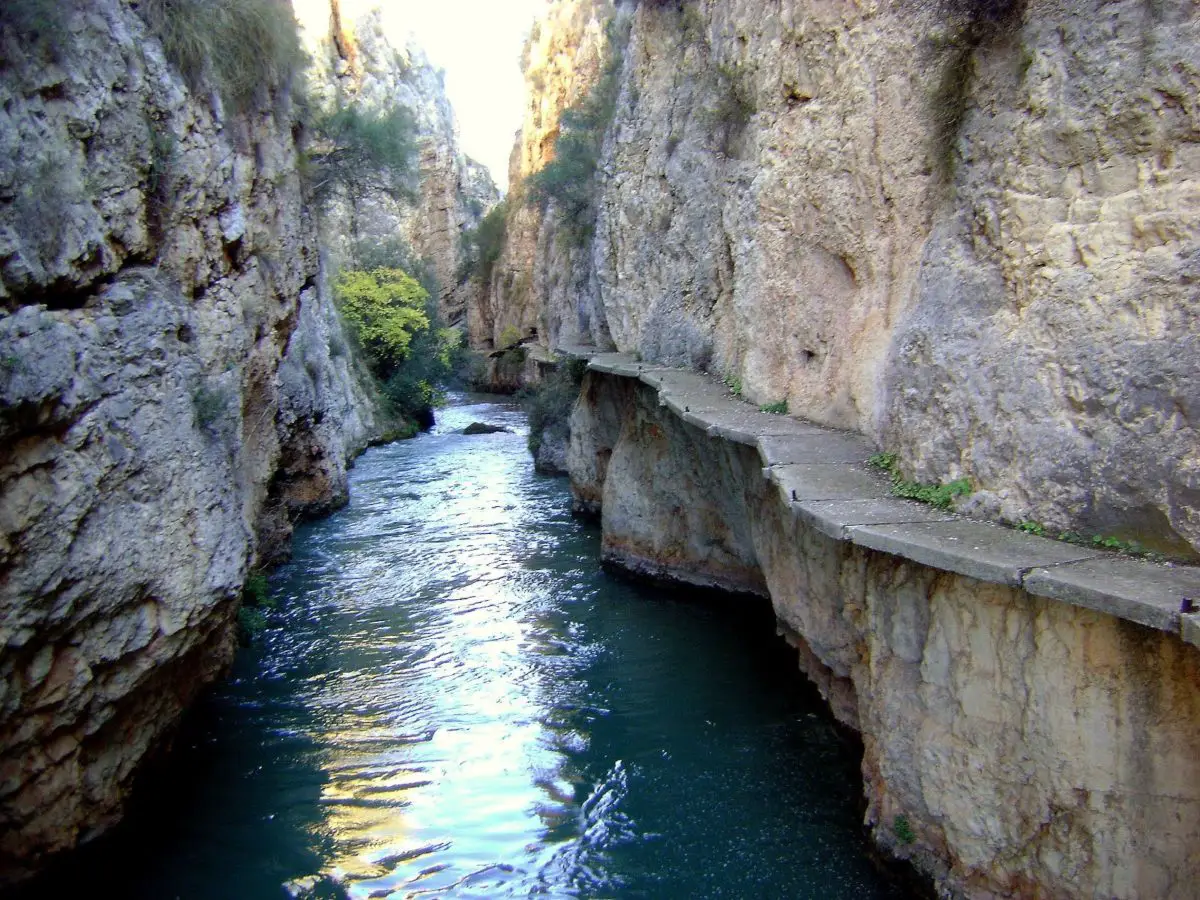
The Guadalentín Tectonic Rift is a tributary that flows downstream (in Murcia) into the Segura River. Here the plain is about 50 metres above sea level and becomes wider. Unfortunately, when the River Segura reaches Murcia, its flow is considerably reduced because its water is taken for use in the city. This hastens the onset of drought, and in winter the area is flooded. The main tributaries in this area are the Rivers Guadalentín and Mula.
Lower course
This is the last stretch of the River Segura. The river passes through Beniel until it reaches the province of Alicante, where it flows into the Mediterranean. The amount of fluvial deposits has meant that the plain (with an average gradient of 0.5 per thousand) is used for agriculture.
The mouth of the River Segura flows into the Mediterranean Sea to the north of Guardamar, splitting the coastal dunes and closing off the fertile plain to the sea. For this reason, a central dike was created in the artificial riverbed. As the enclosed area is very low, lagoons such as Elche Deep are formed.
Cities and towns through which it flows
The Segura River flows through the provinces of Jaén, Albacete, Alicante and Murcia. The same is true of the Tocantins River, which flows through four Brazilian states.
- The province of Jaén includes the municipality of Santiago Pontones.
- The province of Albacete is made up of the towns of Elche de la Sierra, Yeste, Hellín, Letur, Socovos and Férez.
- The province of Alicante is made up of the towns of Guardamar del Segura, Orihuela, Formentera del Segura, Benijófar, Rojales and Benejúzar.
- Finally, the province of Murcia includes Beniel, Alquerías, Molina Segura, Cieza, Blanca, Villanueva del Segura, Alcantarilla and Moratalla, to name but a few. It is one of the provinces with the largest number of municipalities of the four provinces crossed by the River Segura.
What are the tributaries of the Segura River?
The tributaries of the River Segura are divided into left and right tributaries. The left tributaries are the rivers Madera, Tus and Mundo and the wadis of Abanilla, Moro and Judío; the right tributaries are the rivers Taibilla, Benamor, Mula, Zuemeta, Alhárabe, Argos, Pliego, Quípar, Guadalentín, Turrilla and Luchena.
The wadis are Nogalte, Salada, Bosch and Torrealvilla. It can be said that the Segura River has a certain similarity with the Amazon River due to the number of tributaries.
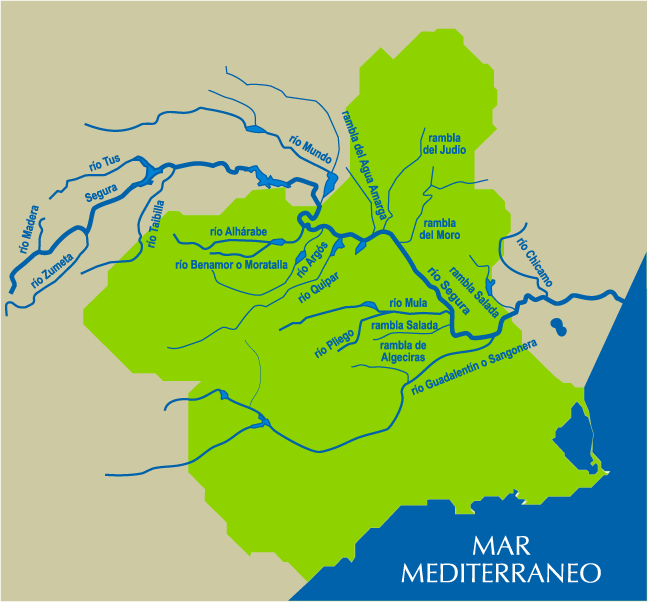
Flora and Fauna in the Segura River
The predominant flora of the Segura River is the riparian forest, which is very common in Murcia, and is made up of trees and shrubs such as willows, reeds, cane and rushes. A little further away from the river bed are the wild roses and elms.
Finally, in the middle, there are white poplars, blackberries, poplars and tamarisks. Towards the river Cieza, we also find riparian forests, but with almadenes, reed beds and the rice fields of Calasparra.
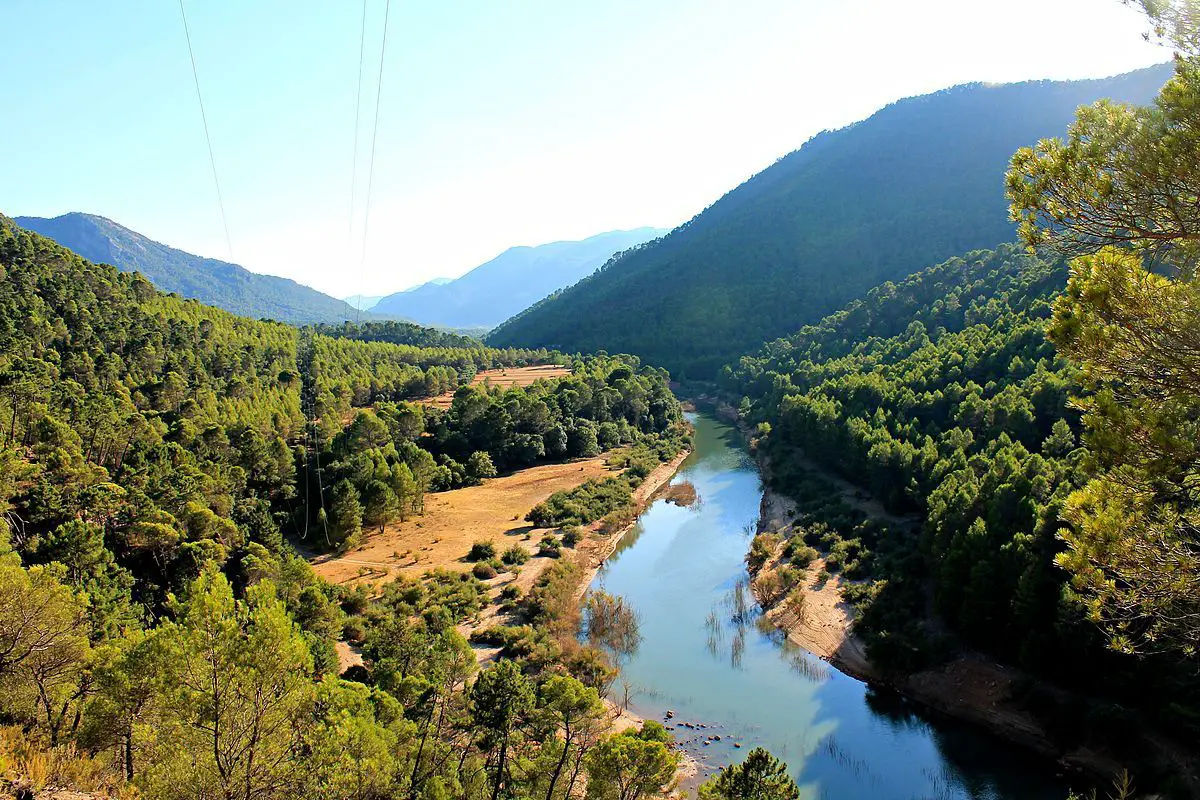
Wildlife includes otters, eels, barbel and trout; birds include eagles, owls, kingfishers, nightingales, blackbirds, dippers and wagtails; bats and gallinules.
Tourism in the Segura River
The River Segura is located in the Sierras de Cazorla, Segura y las Villas Nature Reserve, which means that its waters are protected and cared for. As is well known, the Segura River has reservoirs, meadows, wadis, tributaries, waterfalls and mountains that allow it to be treated as a tourist site.
Along the river you can practice various activities such as rafting, hiking, kayaking, climbing, bathing in its waters, visiting crops, villages and old buildings, watching eagles and owls, admiring its beautiful waters and lush landscapes, from mountains to valleys and plains.
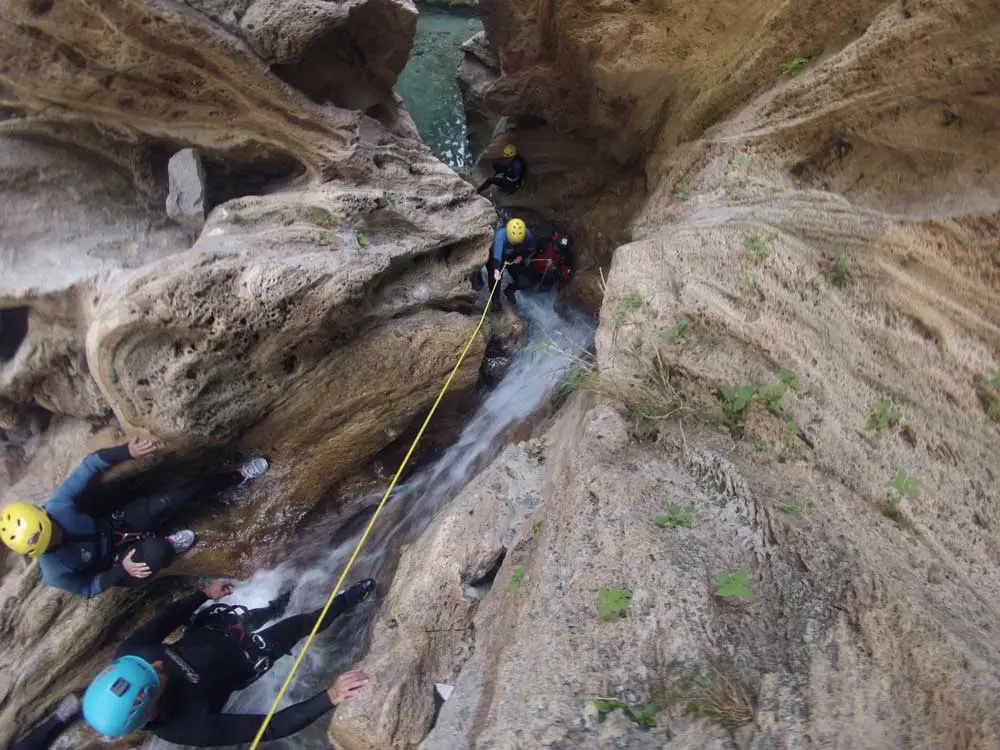
One of the most outstanding activities is rafting, which involves descending a river with a moderate or strong current in a team on a rubber boat or raft. It’s all about teamwork and having a good time.
In the provinces there are companies that offer a variety of activities in the park, including the practice of extreme sports. The most recommended places to practice this activity are from the city of Cieza to Blanca, in the province of Murcia.
This activity is usually done with a team of 11 people, a monitor (person who directs the activity) and participants are asked to bring an extra change of clothes to change into after the activity (see article Río Portuguesa).
For the more conservative there are the villages and castles. Among them you can visit the village and castle of Hornos de Segura, the source of the river Segura in Santiago Potones, in Archena the castle of Don Mario and the museum of Archena, the viewpoints of la Morra, Fuente Buena, the castle of la Blanca, Salto de la Novia.
Also the fruit trees in Archena and Ulea, the sculpture of El Corazón de Jesús, from which you can see the whole valley, the Golgo (old hydroelectric power station), which is used for fishing and bathing in the summer, the Centre for the Interpretation of Light and Water in Blanca.
The Sierras de Cazorla, Segura and Las Villas Nature Reserve, where you can get to on foot or on dirt tracks for which you will need a 4×4 vehicle, you can visit the source of the Segura River and share a barbecue with your friends, as there is a space with tables, you can walk along the various trails.
Admire the landscapes and birds such as eagles and owls, bathe in the waterfalls and cascades, fish in the authorised places, in short, you can carry out different activities, because the park is very versatile, no matter what your personality, there are activities for all tastes.
Segura River at risk
Since the 1990s, the River Segura has not only been famous for its scenery and all the activities that can be done on it, on the contrary, it has been in the news for its pollution, being catalogued as one of the dirtiest rivers in Europe.
Despite being one of the rivers with the most potential and hydrological use, it is not exempt from many problems due to the lack of awareness of its inhabitants and the lack of public policies to keep it clean.
The Segura River has been the subject of much debate because of the irregularity of its flow, with very long dry periods and, when it rains, the dry areas are flooded, often affecting urban areas. The most affected areas of the Segura River are in its middle and lower course, especially in the city of Murcia (see article Rio Colorado).
The main characteristic of the tributaries is that they are wadis, with a wide, stony bed and little or no water. The most important rivers in the middle section of the Segura are the Guadalentín and the Mula, the former being the cause of most of the disasters in Murcia.
The result is a foul-smelling sludge that reaches Alicante. According to a study carried out by the University of Elche, the amount of organic matter in the water is 250 times higher than what is allowed by the water law.
The small Villanueva irrigation canal also has problems with uncontrolled dumping, manure, plastic containers and rubbish. These facts cause the appearance of foam and dead fish in the Segura riverbed as it flows through Murcia.
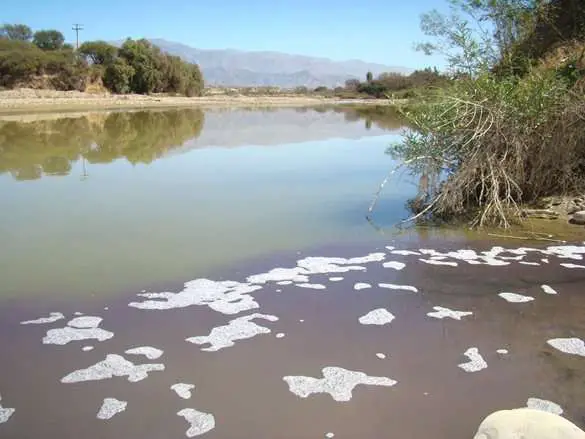
There are three types of pollution in the River Segura: agricultural, industrial and urban. The first is due to the excessive use of insecticides, fertilisers, phytosanitary products and nitrates in crops, which are poured into the soil and then washed into the water, contaminating it.
Secondly, purines, highly conductive materials, dyes, salts, chromium and waste from the tanning industry in Murcia and Lorca (on the banks of the Guadalentín).
And finally, the municipal sewage treatment plants, which treat only a tiny fraction of the water, without knowing the damage they are causing, for a total of 70 villages that do not treat their water.
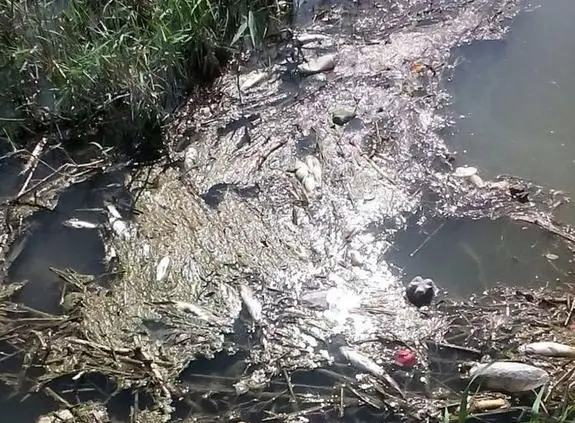
Dead fish and foam usually appear during or after the rains, a fact that has been denounced by members of Huermur (Association for the Conservation of the Huerta and the Heritage of Murcia), as these events have been repeated very frequently.
The association criticises the CHS (Confederación Hidrográfica del Segura) for its poor water management policy.
The Segura River is stained red
On two occasions the River Segura has turned red, one man-made and the other natural, the first of which should worry us.
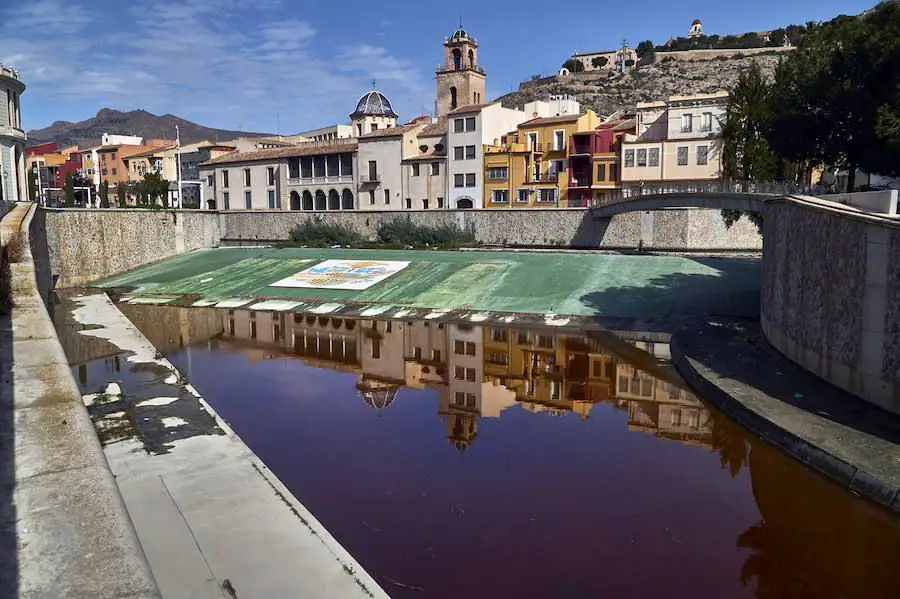
In addition to this, the presence of dead animals in the weeks leading up to the event, as well as various objects such as wood and armchairs on the mud banks, could have contributed to the red pigmentation of the river.
The authorities have taken samples of the water to determine the true origin of the problem, and with these samples they will investigate what the real compound is that caused the colour, whether it was natural or not, and of course the real culprits of this unpleasant situation.
The authorities believe that the situation was caused by a “gambarrada” (an act that goes against good manners and is intended to cause annoyance among the population), since the analyses carried out in the morning showed that it was the spillage of a dye that caused the colour, they believe that it was not toxic because they did not find any dead animals.
The Dumping Control Unit activated the sewage treatment plant and pumped clean water to dilute the red stain and wash it downstream. They warned the Water Court and farming communities not to irrigate while the clean-up was taking place.
The Segura River is polluted by algae
The second reason why the River Segura has turned red is due to natural causes, specifically a microscopic alga whose scientific name is Plagioselmis sp., a member of the family of cryptophyceae, which are non-toxic algae. The event occurred at the mouth of the river at the San Antonio dam in Guardamar.
The proliferation of these microscopic algae takes place in brackish water and is, fortunately, non-toxic; the red colour produced by the algae is due to the phycoerythrin, a reddish pigment they contain, which allows them to adapt better to environmental conditions.
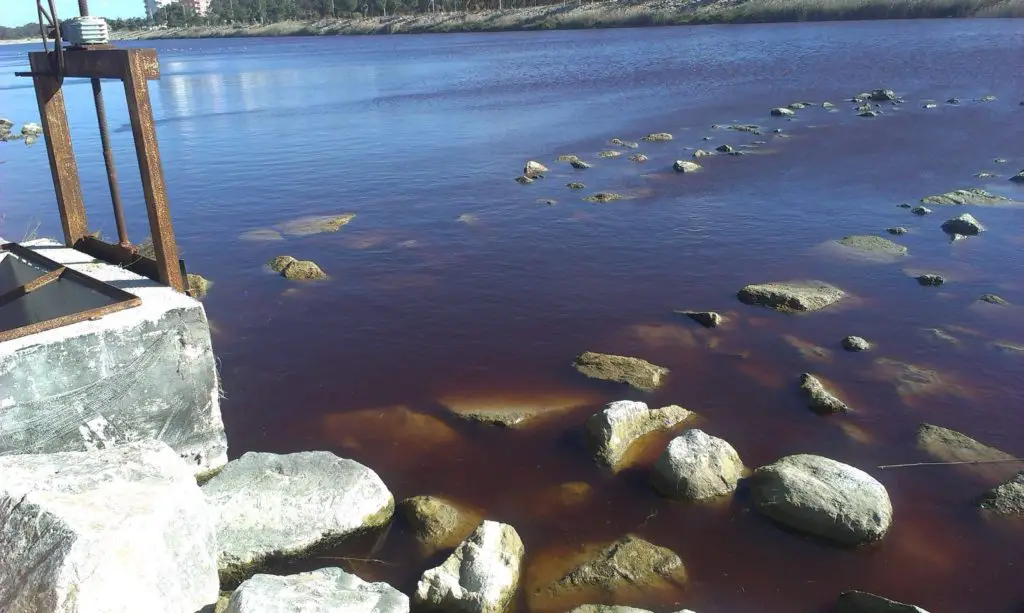
Analyses carried out by the Confederación Hidrográfica del Segura (CHS) and its Water Commission showed that the presence of the algae was not toxic and did not affect the local fauna, and the event was considered a natural phenomenon.
Recovery of the Segura River
More than 10 years ago, the River Segura was one of the dirtiest rivers in Europe, due to its low flow, the lack of environmental awareness, the lack of water purification, the presence of industries and the scarce resources allocated to its maintenance.
The inhabitants of Murcia and the lower reaches of the river have seen the consequences in the form of foam metres high, black water and a stench that has left few living creatures in the area.
Some solutions that could help clean up the river include
- Create a plan or mechanisms to efficiently purify wastewater produced by industries and urban developments.
- Restore and conserve the watercourses of the tributaries, as well as the vegetation and especially the riparian forests.
- The non-implementation of the water transfers foreseen in the National Hydrological Plan, as this only increases the amount of irrigated land and over-exploits the river’s capacity.
- Establish strategic points to place control points and take samples of discharges.
- Use agricultural varieties that require less water consumption.
- Prohibit indiscriminate irrigation and eliminate illegal irrigation.
- Provide inspection services
- Criminal and administrative penalties for offenders
- Create strategies and policies for reasonable and sustainable water use.
In the Segura River, rainfall is scarce and irregular, and the riverbeds have steep slopes that cause a torrential flow of water when it rains. Most of the time, these areas remain dry and when it rains, the water goes to the sea, with little natural use; this causes serious flooding because the amount that should rain annually rains all at once in a very short period of time.
For this reason, the authorities, such as the General State Administration, created the Flood Defence Plan to control flooding. Previously, detailed hydrological studies had allowed new dams to be built and several stretches of the River Segura to be channeled. These new measures have made it possible to improve water management during floods.
The SAIH (Automatic Hydrological Information System) was set up to manage floods in real time, allowing the hydrological situation of the basin to be known and alarms to be activated immediately to warn the population. This type of action by government agencies can be considered an excellent option for flood warning.
Anse’s contribution to the Segura River
Another action in favour of the river comes from the Anse Association, which has recovered the nine historic meanders that run through Murcia. They have planted 2,500 trees, including elms, baladres, yellow lilies and white poplars, and are responsible for watering and removing invasive species such as reeds.
On the 20th and 31st of July, Anse and the General Directorate of Youth organised a work camp called “The path along the river”, where they carried out bird ringing, the construction of bat boxes and the descent of the river.
They cleaned up the meanders and returned this space to the people of Murcia for recreation and sport, which is used on a daily basis due to its great extension.
Due to the positive results obtained with these proposals, the Council announced that it does not exclude the possibility of promoting, creating and approving new proposals next year that contribute to the cleaning of the River Segura and its use for various outdoor activities.
It is this kind of proposal that makes us reconcile with nature. Until it affects us, we will not realise that the environment and we are one, we need it and the best way to reward it is to take care of it.
Nature gives us a lot, just look at the number of activities that can be done along the Segura River; its inhabitants have this paradise close to their homes, they do not have to travel to enjoy the beautiful scenery, the crystal clear waters, to admire the birds or, for the more adventurous, to practice extreme sports. It shows that man and nature can be friends.
Award winning initiatives
Spain was a finalist in the International River Symposium Awards, held in New Delhi, India; these awards recognise good management of water resources, taking into account criteria such as purification, restoration and reuse. Fortunately, the Rio Segura project was taken into consideration, although it did not win the first prize.
This project was made possible thanks to the collaboration of the Government of Murcia, the Confederación Hidrográfica del Segura, local administrations and ecological organisations. As a result of this project, the River Segura has been cleaned and reused, making it one of the least polluted rivers, whereas before it was considered one of the dirtiest rivers in Europe.
The project has had a positive impact on the fauna of the Segura, with the return of otters and eels, and the simple fact of seeing life in the water has encouraged local people to enjoy leisure activities such as canoeing and fishing.
Another award-winning initiative is the recovery of two wetlands thanks to the water from the treatment plants; this action allows the migration of birds, which is why it has been included in the Ramsar Convention. More water resources have been created for this very dry area of Europe.
The Segura River Recovery Project has won other awards such as the European Riverprize for promoting the recovery and improvement of the river. It was also a finalist in the Life Territorio Visón.
Finally, the good work for the Segura River, its habitat, its flora and fauna, and the people who live and work in the area has been recognised. Thanks to the joint efforts of government bodies, environmental associations and the citizens themselves, the Segura River has been able to recover. The best work that could have been done was to raise the awareness of each and every resident along the length and breadth of the river, because small efforts often lead to great things.

